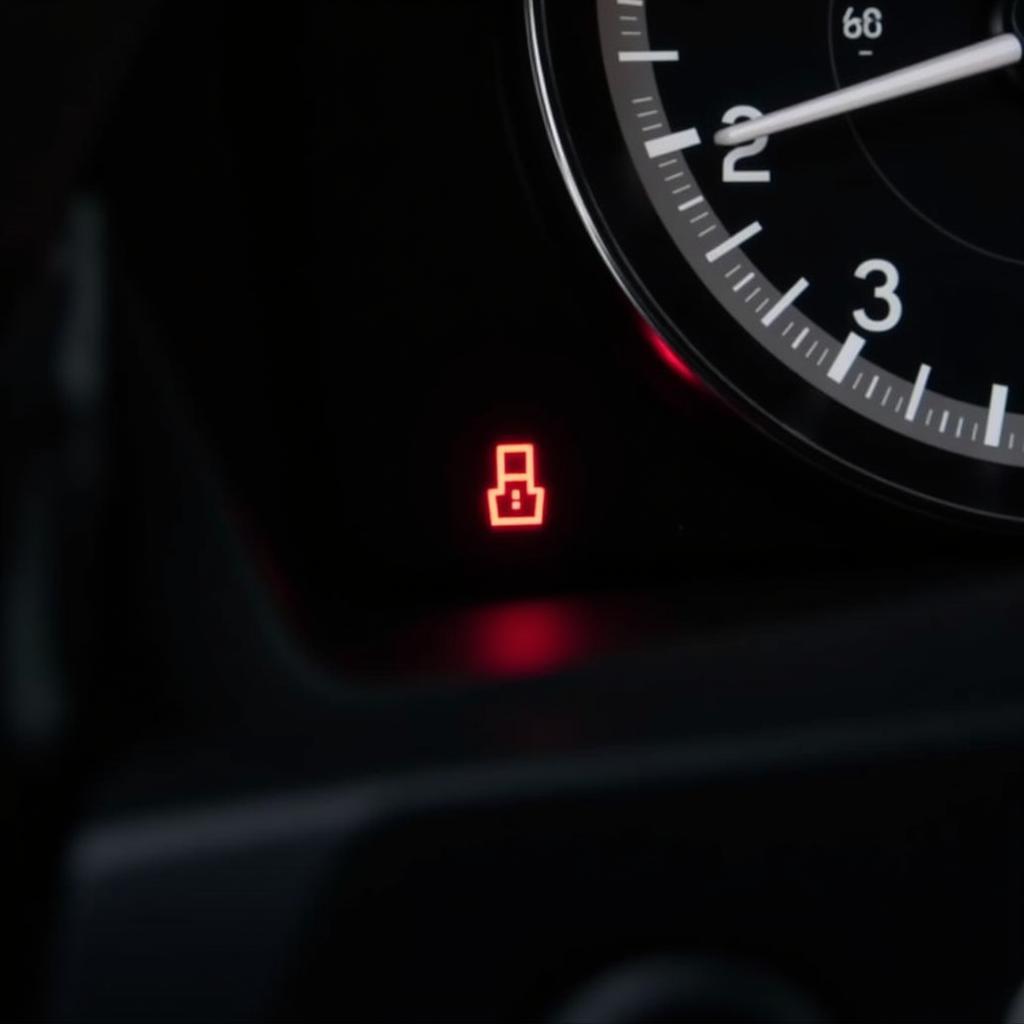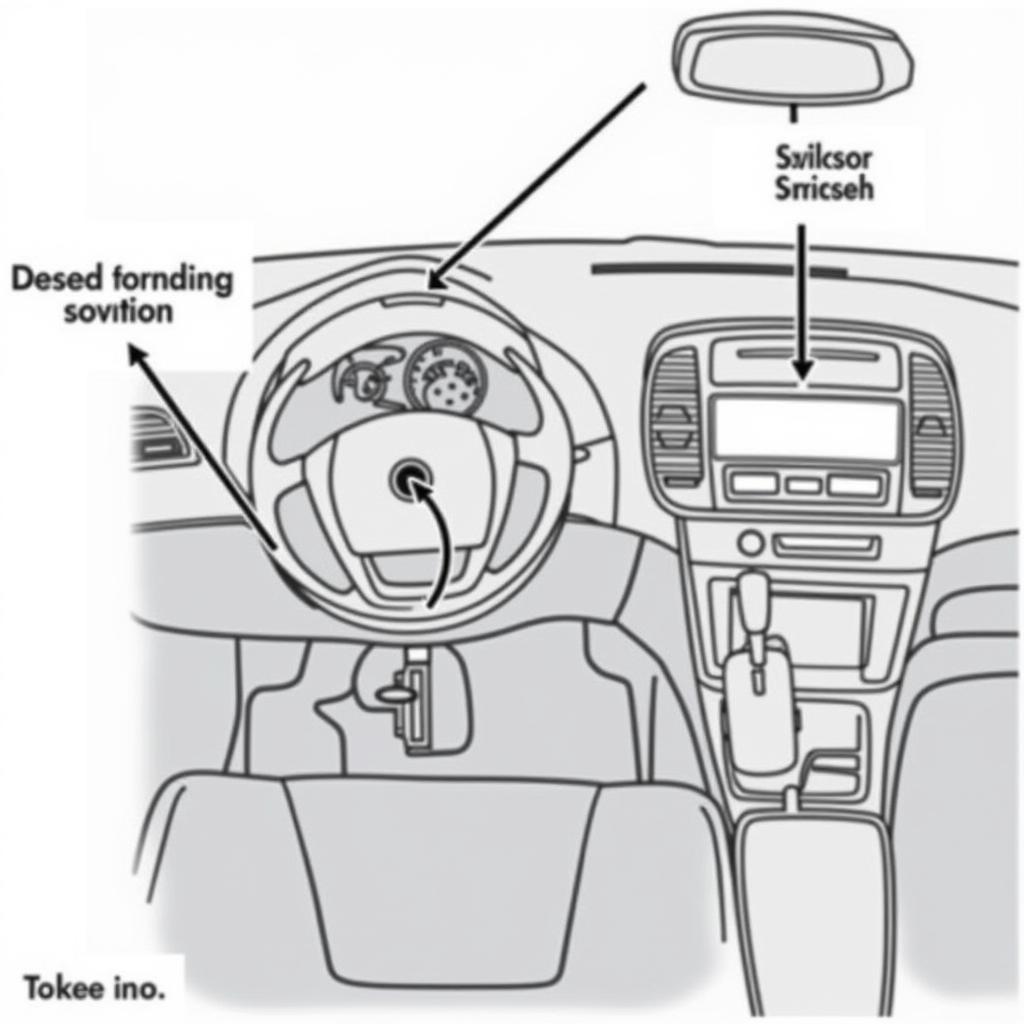Seeing a brake pad warning light on your Mercedes dashboard can be unsettling. It’s a clear signal from your car’s sophisticated onboard computer system that attention is needed in the braking system. While this system is designed to keep you safe, understanding the warning and its implications is essential. This article will delve into the intricacies of the Mercedes brake pad warning, exploring the causes, solutions, and preventive measures to keep you driving with confidence.
What Triggers the Mercedes Brake Pad Warning Light?
Mercedes vehicles are equipped with a sensor system designed to monitor the condition of your brake pads. When the brake pad material wears down to a certain level, the sensor triggers the warning light on your dashboard. This usually manifests as a yellow or red illuminated circle with a dotted half-circle around it.
Here’s a closer look at the typical culprits behind a Mercedes brake pad warning:
- Worn Brake Pads: The most common reason for the warning is simple wear and tear. As you use your brakes, the friction material on the pads gradually wears down.
- Worn Brake Pad Sensor: The sensor itself can malfunction or become damaged, triggering a false warning.
- Low Brake Fluid: Brake fluid is essential for transmitting the force you apply to the brake pedal to the wheels, stopping the vehicle. A leak in the brake lines can lead to low brake fluid and activate the warning light.
- Electrical Issue: In some cases, a faulty sensor wire or connector can trigger the warning light even if the brake pads and fluid levels are fine.
What to Do When the Warning Light Comes On
Ignoring the brake pad warning light can lead to more serious and potentially dangerous brake problems. Here’s what to do:
- Check Your Brake Pads: If you’re comfortable with basic car maintenance, you can visually inspect your brake pads. Look through the spaces between the wheel spokes for the brake pads. If the friction material is less than 1/4 inch thick, it’s time for a replacement.
- Check Brake Fluid Level: Locate the brake fluid reservoir under the hood. The reservoir will have clear markings for “Min” and “Max.” If the fluid level is below the “Min” mark, add the appropriate DOT brake fluid recommended in your Mercedes owner’s manual.
- Schedule an Inspection: If you’re unsure about the condition of your brakes or notice any other symptoms like grinding noises, pulling to one side, or a spongy brake pedal, it’s crucial to schedule an inspection with a qualified Mercedes technician immediately.
 Close-up of worn brake pad
Close-up of worn brake pad
How Much Does it Cost to Replace Mercedes Brake Pads?
The cost of brake pad replacement for a Mercedes varies depending on several factors, including the model, year, type of brake pads (genuine Mercedes parts vs. aftermarket), labor costs at your chosen repair shop, and your location.
Here’s a general idea of potential costs:
- Brake Pads: $150 – $400 per axle (front or rear)
- Labor: $100 – $250 per axle
- Sensor Replacement: $50 – $150 per sensor (if required)
It’s always wise to get a quote from a reputable Mercedes specialist or dealership for the most accurate estimate for your specific vehicle.
Can I Drive My Mercedes with the Brake Pad Warning Light On?
While it might be tempting to continue driving with the brake pad warning light illuminated, especially if you don’t notice any immediate braking issues, it’s strongly advised against. Driving with significantly worn brake pads can lead to:
- Reduced Braking Performance: The less friction material you have on your brake pads, the less effective your brakes will be at slowing down or stopping your vehicle.
- Damage to Rotors: Continuing to drive with worn pads will cause the metal backing plate of the brake pad to rub against the brake rotors, resulting in costly rotor damage.
- Brake Failure: In extreme cases, completely worn-out brake pads can lead to complete brake failure, putting you and others on the road at serious risk.
 Mercedes dashboard with brake warning light illuminated
Mercedes dashboard with brake warning light illuminated
Mercedes Brake Pad Warning: Frequently Asked Questions
Q: How often should I replace my Mercedes brake pads?
A: There is no set mileage interval for brake pad replacement. Driving habits, road conditions, and the type of brake pads all play a role. It’s best to have your brakes inspected at least once a year by a qualified technician to assess their condition.
Q: Can I replace my Mercedes brake pads myself?
A: While it is possible to replace brake pads yourself, it’s generally recommended to leave this task to qualified professionals, especially on luxury vehicles like Mercedes. Brake systems are complex and require specialized tools and knowledge.
Q: What’s the difference between a yellow and red brake pad warning light?
A: A yellow brake pad warning light typically indicates that your brake pads are wearing thin and need to be replaced soon. A red brake pad warning light signals a more urgent issue, such as critically low brake fluid or a problem with the brake system’s electronics.
Q: Can I just top off my brake fluid if the level is low?
A: While you can add brake fluid to bring the level back to the “Max” mark, a low fluid level often indicates a leak in the brake system. It’s crucial to have the system inspected and repaired by a professional to avoid potential brake failure.
Q: Why are my new brake pads squealing?
A: Some squealing is normal with new brake pads, especially during the break-in period. However, if the squealing persists or worsens, it could indicate an issue with the installation or a problem with the brake hardware.
Maintaining Your Mercedes Brakes for Optimal Safety
Addressing the Mercedes brake pad warning light promptly and adhering to regular brake inspections are essential for your safety and the longevity of your vehicle.
mercedes brake pads warning light should never be ignored. By understanding the warning signs, potential causes, and taking proactive steps to maintain your Mercedes braking system, you can enjoy many miles of safe and confident driving.


